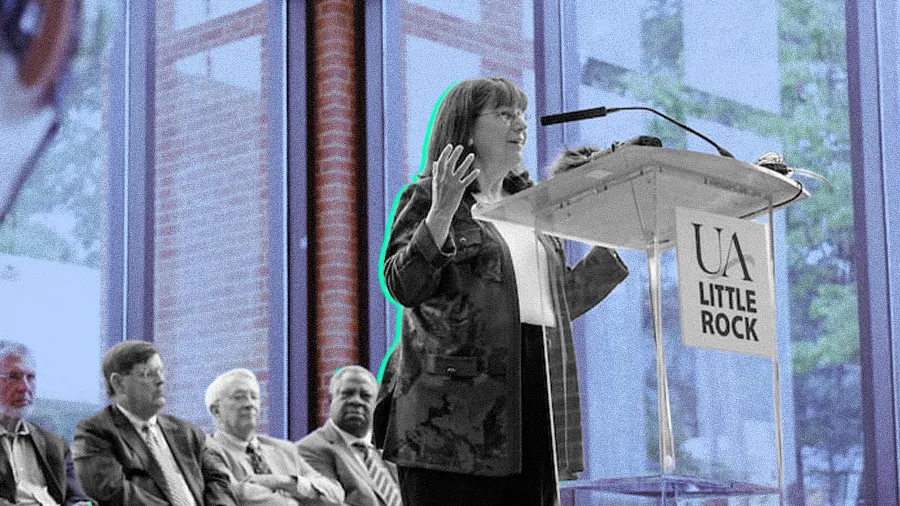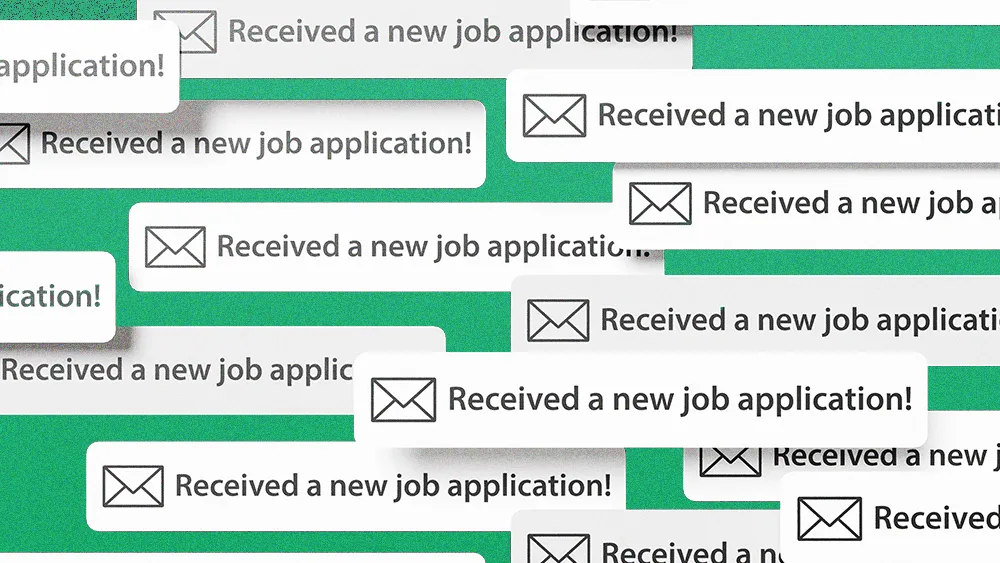How a University Used the Taylor Swift Playbook as a Major Win for Workplace Culture

Key Points
Pop superstar Taylor Swift’s marketing, built on secrets and symbolic reveals, provides a playbook for generating excitement in any industry.
Carrie Phillips, Chief Communications and Marketing Officer for the University of Arkansas at Little Rock, details how she translated Swift’s pop culture lessons into an effective institutional strategy.
Phillips’s team created their own “Taylor moment,” orchestrating a surprise reveal for a $7.5 million gift, followed by a more traditional media blitz.
Its success shows how patience, leadership trust, and small, empowered teams can create a bigger impact than traditional advertising.
Taylor Swift has done a good job of playing the long game, and I think that's something we in higher ed don't think enough about. What kind of self-control did it take to be confident enough in it to sit on it and keep that quiet to build the right moment? We get so excited about getting something out into the market that we don't always take the time to build all the pieces around it.

Carrie Phillips
Chief Communications and Marketing Officer
University of Arkansas at Little Rock
The most powerful marketing isn’t always a sustained campaign. Sometimes, it’s a single, perfectly executed moment. It’s a strategy built on patience and discipline, where one well-timed reveal can create an emotional payoff that traditional advertising can’t replicate. Look no further than pop superstar Taylor Swift, who has mastered this playbook, using carefully guarded secrets and symbolic reveals, like a mysterious orange door, to generate enormous interest. Swift’s impact on corporate culture is undeniable. A new report from BambooHR covering Swift and the workplace found 58% of Swifties often discuss pop culture with their coworkers and 6% of salaried workers planned to take off for the release of her album, The Life of a Showgirl.
Carrie Phillips is an expert at translating these pop culture lessons into effective institutional strategy. As the Chief Communications and Marketing Officer for the University of Arkansas at Little Rock, following more than a decade in leadership at Arkansas Tech University, Phillips has built a career on finding new ways to tell a university’s story and creating resonant moments, just like Taylor. “She has done a good job of playing the long game, and I think that’s something we in higher ed don’t think enough about. What kind of self-control did it take to be confident enough in it to sit on it and keep that quiet to build the right moment? We get so excited about getting something out into the market that we don’t always take the time to build all the pieces around it,” she says.
The right time: While universities tend to err on the side of community-wide buy-in, Phillips put the “wait for the right moment” playbook into action with a major announcement at UA Little Rock last year. The university secretly secured a $7.5 million gift from the Windgate Foundation to fund its affordability initiatives, like the Trojan Guarantee scholarship, in perpetuity. Instead of a standard press release, the team created a singular, fanfare moment around the announcement. It worked, she explains, because it was built on support from leadership and a small, empowered team. “Our chancellor immediately saw this as an opportunity to craft a true moment. We worked intentionally with her leadership on a strict, need-to-know basis. That discipline is what created the powerful reveal and the impact wasn’t diluted by leaks,” she shares.
A Taylor-made moment: “We were in the library with hundreds of people, including legislators, board of trustees members, and community leaders. When we announced the $7.5 million gift, there was an audible gasp in the room, followed by sheer applause. It was a Taylor moment of marketing,” she recalls. Following the surprise, Phillips and her team launched a planned media blitz within the hour. On-site, the formal announcement blossomed into a campus party where people chose to spend their afternoon connecting. “By creating that celebratory environment, we gave people a reason to stay,” she states.
Pulling off a secret this big requires agility and trust, a philosophy that extends from internal teams to external partners. Phillips points to the culture-building collaboration between Taylor Swift and Starbucks as a model for choosing partners based on shared values. The UA Little Rock reveal was only possible because of a deep-seated culture of internal trust, exemplified when the library director agreed to host the secret event based on confidence in the team’s vision alone. “In higher ed, we do a lot of committee work, which is important for bringing different voices to the table. But we could be better at bringing people in for short periods and then letting them go back to their other work, so we don’t create these meetings that live in perpetuity with hundreds of people in them,” she says.
These strategies—the long game, lean teams, and authentic partnerships—all point back to a single, foundational principle. “My final thought is to be intentional in what you do,” Phillips says. “Your plan may not need to look like Taylor’s, but know who your audience is and be intentional in how you interact with them. That will serve you well regardless of your audience or your product.”
Related articles
TL;DR
Pop superstar Taylor Swift’s marketing, built on secrets and symbolic reveals, provides a playbook for generating excitement in any industry.
Carrie Phillips, Chief Communications and Marketing Officer for the University of Arkansas at Little Rock, details how she translated Swift’s pop culture lessons into an effective institutional strategy.
Phillips’s team created their own “Taylor moment,” orchestrating a surprise reveal for a $7.5 million gift, followed by a more traditional media blitz.
Its success shows how patience, leadership trust, and small, empowered teams can create a bigger impact than traditional advertising.

Carrie Phillips
University of Arkansas at Little Rock
Chief Communications and Marketing Officer

Chief Communications and Marketing Officer
The most powerful marketing isn’t always a sustained campaign. Sometimes, it’s a single, perfectly executed moment. It’s a strategy built on patience and discipline, where one well-timed reveal can create an emotional payoff that traditional advertising can’t replicate. Look no further than pop superstar Taylor Swift, who has mastered this playbook, using carefully guarded secrets and symbolic reveals, like a mysterious orange door, to generate enormous interest. Swift’s impact on corporate culture is undeniable. A new report from BambooHR covering Swift and the workplace found 58% of Swifties often discuss pop culture with their coworkers and 6% of salaried workers planned to take off for the release of her album, The Life of a Showgirl.
Carrie Phillips is an expert at translating these pop culture lessons into effective institutional strategy. As the Chief Communications and Marketing Officer for the University of Arkansas at Little Rock, following more than a decade in leadership at Arkansas Tech University, Phillips has built a career on finding new ways to tell a university’s story and creating resonant moments, just like Taylor. “She has done a good job of playing the long game, and I think that’s something we in higher ed don’t think enough about. What kind of self-control did it take to be confident enough in it to sit on it and keep that quiet to build the right moment? We get so excited about getting something out into the market that we don’t always take the time to build all the pieces around it,” she says.
The right time: While universities tend to err on the side of community-wide buy-in, Phillips put the “wait for the right moment” playbook into action with a major announcement at UA Little Rock last year. The university secretly secured a $7.5 million gift from the Windgate Foundation to fund its affordability initiatives, like the Trojan Guarantee scholarship, in perpetuity. Instead of a standard press release, the team created a singular, fanfare moment around the announcement. It worked, she explains, because it was built on support from leadership and a small, empowered team. “Our chancellor immediately saw this as an opportunity to craft a true moment. We worked intentionally with her leadership on a strict, need-to-know basis. That discipline is what created the powerful reveal and the impact wasn’t diluted by leaks,” she shares.
A Taylor-made moment: “We were in the library with hundreds of people, including legislators, board of trustees members, and community leaders. When we announced the $7.5 million gift, there was an audible gasp in the room, followed by sheer applause. It was a Taylor moment of marketing,” she recalls. Following the surprise, Phillips and her team launched a planned media blitz within the hour. On-site, the formal announcement blossomed into a campus party where people chose to spend their afternoon connecting. “By creating that celebratory environment, we gave people a reason to stay,” she states.
Pulling off a secret this big requires agility and trust, a philosophy that extends from internal teams to external partners. Phillips points to the culture-building collaboration between Taylor Swift and Starbucks as a model for choosing partners based on shared values. The UA Little Rock reveal was only possible because of a deep-seated culture of internal trust, exemplified when the library director agreed to host the secret event based on confidence in the team’s vision alone. “In higher ed, we do a lot of committee work, which is important for bringing different voices to the table. But we could be better at bringing people in for short periods and then letting them go back to their other work, so we don’t create these meetings that live in perpetuity with hundreds of people in them,” she says.
These strategies—the long game, lean teams, and authentic partnerships—all point back to a single, foundational principle. “My final thought is to be intentional in what you do,” Phillips says. “Your plan may not need to look like Taylor’s, but know who your audience is and be intentional in how you interact with them. That will serve you well regardless of your audience or your product.”




